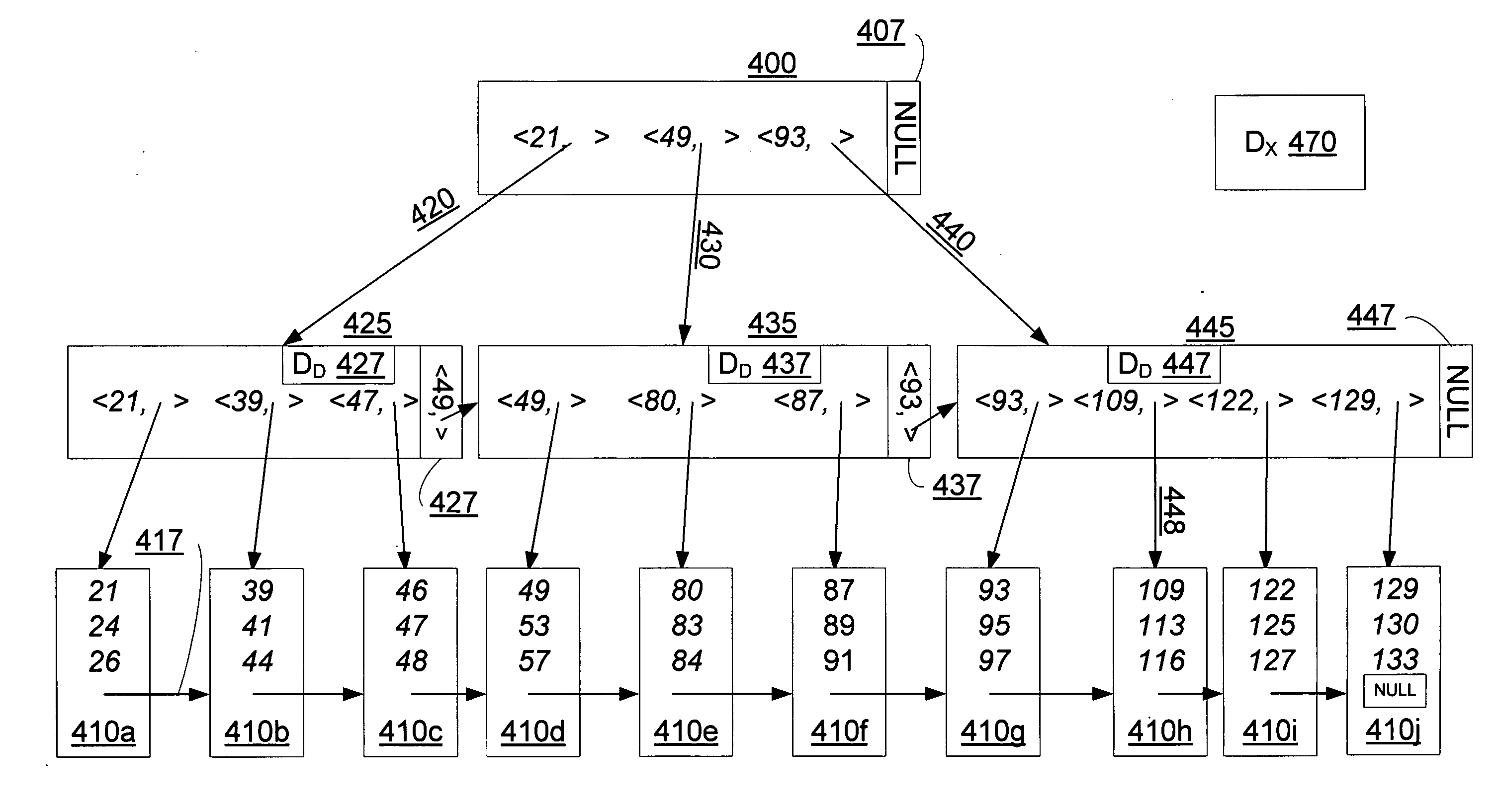Concurrency control for B-trees with node deletion
a node deletion and concurrency control technology, applied in the field of data storage methods and systems, can solve the problems of recursive split up the b-tree, violate this constraint, and return an unsuccessful search, and achieve high-concurrent data access
- Summary
- Abstract
- Description
- Claims
- Application Information
AI Technical Summary
Benefits of technology
Problems solved by technology
Method used
Image
Examples
Embodiment Construction
[0027] Overview
[0028] The first tracked delete state, the index delete state (DX) indicates whether it is safe to directly access a parent node (hence an index node, not a data node) without re-traversing the B-tree. DX contains this information for all nodes above the leaf level; and in one embodiment it is maintained outside of the tree since any index node may be deleted. DX (nodeA) can be consulted to determine that index nodeA may have been deleted, or that index nodeA cannot have been deleted. In one embodiment, DX(n) is a binary function over all index nodes n in the B-tree, with one possible value indicating that the node cannot have been deleted, and the other possible value indicating that the node may have been deleted. In another embodiment, DX is a counter which is incremented when an index node has been deleted, so that a change in DX indicates that a node delete has occurred, while no change means that no nodes have been deleted since the earlier inspection of DX
[00...
PUM
 Login to View More
Login to View More Abstract
Description
Claims
Application Information
 Login to View More
Login to View More - R&D
- Intellectual Property
- Life Sciences
- Materials
- Tech Scout
- Unparalleled Data Quality
- Higher Quality Content
- 60% Fewer Hallucinations
Browse by: Latest US Patents, China's latest patents, Technical Efficacy Thesaurus, Application Domain, Technology Topic, Popular Technical Reports.
© 2025 PatSnap. All rights reserved.Legal|Privacy policy|Modern Slavery Act Transparency Statement|Sitemap|About US| Contact US: help@patsnap.com



